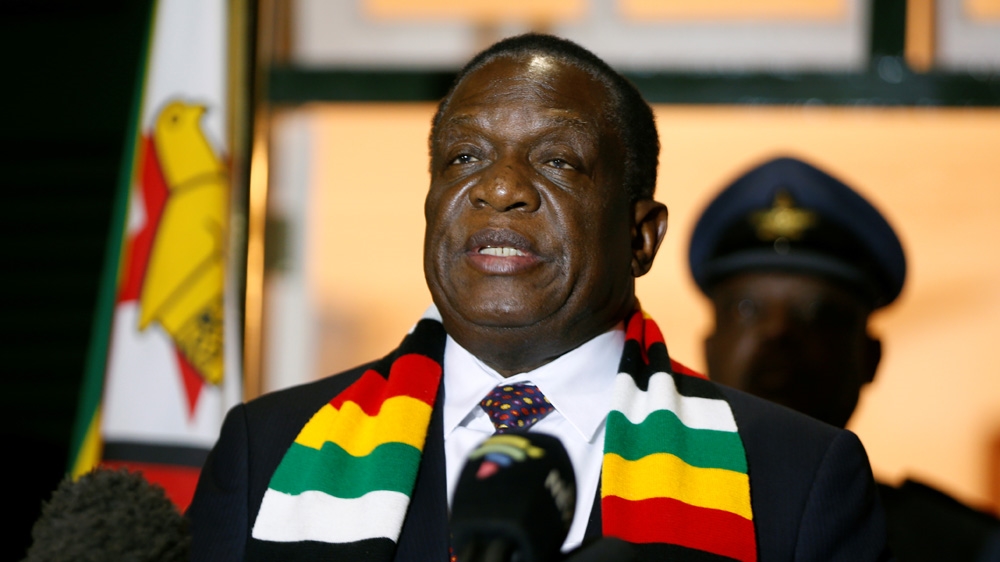Development Strategy 1 launch set for today
The National Development Strategy 1 (NDS1), which charts policies, institutional reforms and national priorities needed from 2021-2025 to achieve an upper middle income economy under Vision 2030, is expected to be launched today by President Mnangagwa.
NDS1 is the second step of the Second Republic’s drive to attain Vision 2030, and will succeed the Transitional Stabilisation Programme (TSP), which ran from October 2018 to this year.
The third step will be National Development Strategy 2 to be implemented from 2026 to 2030.
The TSP focused on stabilising the macro-economy and the financial sector, improving infrastructure, and laid the foundation required for economic take-off and growth.
On Tuesday last week, Cabinet approved NDS1, which has been hailed by economic experts, multilateral agencies and civic society as critical to economic recovery.
The blueprint will run under the theme “Towards a Prosperous and Empowered Upper Middle Income Society by 2030”.
The World Bank has since welcomed the NDS1, saying it would go a long way in helping the country’s economic recovery efforts, particularly Government’s thrust to embark on reforms and engagement efforts.
“The Government’s plan to issue an NDS is welcome,” said the global lending institution’s spokesperson in an interview with The Herald.
“We look forward to seeing the strategy which we understand will be released in the near future.”
The World Bank spokesperson noted that Zimbabwe ranked higher than many of its peers in the region in terms of debt reporting, as shown in the October 2020 World Bank Africa Pulse report.
Improving debt transparency through publication of the annual borrowing plan, the adoption of a debt management strategy, and a re-engagement roadmap would strengthen the country’s ability to borrow at better financial terms and conditions, said the World Bank.
Labour and Economic Development Research Institute of Zimbabwe senior economist Dr Prosper Chitambara told The Herald last Friday that TSP had registered critical successes such as a budget surplus achieved on the back of austerity measures.
Dr Chitambara said Government should consider rationalising the 14 priority areas in the NDS1 and implement them in a phased approach to derive maximum benefit.
Some of the 14 priority areas are: economic growth and stability; food security and nutrition; governance; moving the economy up the value chain and structural transformation; human capital development; environmental protection, climate resilience and natural resource management; housing delivery; ICT and the digital economy; health and well-being; transport, infrastructure among others.
“These are the right areas, but I am not sure if we have the capacity to tackle all 14 factors at the same time,” he said.
“We need to prioritise the areas, to say what are the most binding constraints to development at this point, because in trying to achieve so many things, you might end up spreading yourself thin and not achieving much.
“We need to prioritise and attack them in a sequential and incremental way so as to optimise in terms of our resources and capacity.”
Employers Confederation of Zimbabwe president Dr Israel Murefu said there was need for NDS1 to provide comprehensive measures to support industry given the shocks suffered by the measures required to contain Covid-19.
“We expect any measures to be taken to be comprehensive enough to enable economic turnaround and consequently business recovery so that we mitigate the damage caused by Covid-19,” he said.
“We also expect policy consistency to enable business planning and management of costs which, if not contained, could threaten its survival.”
Zimbabwe Coalition on Debt and Development executive director, Janet Zhou, praised the NDS1, but wanted Government to push hard on public-sector led growth.
“We need to focus on public-sector reforms and public-sector led growth where previously and history tells us that our public sector used to contribute up to 40 percent of gross domestic product,” he said.
“Most vulnerable people in Zimbabwe rely on these public institutions. We need to see the intention of NDS1 in terms of reviving the public institutions, poverty issues, food security, housing, shelter and all the constitutional rights.”-herald.cl.z









